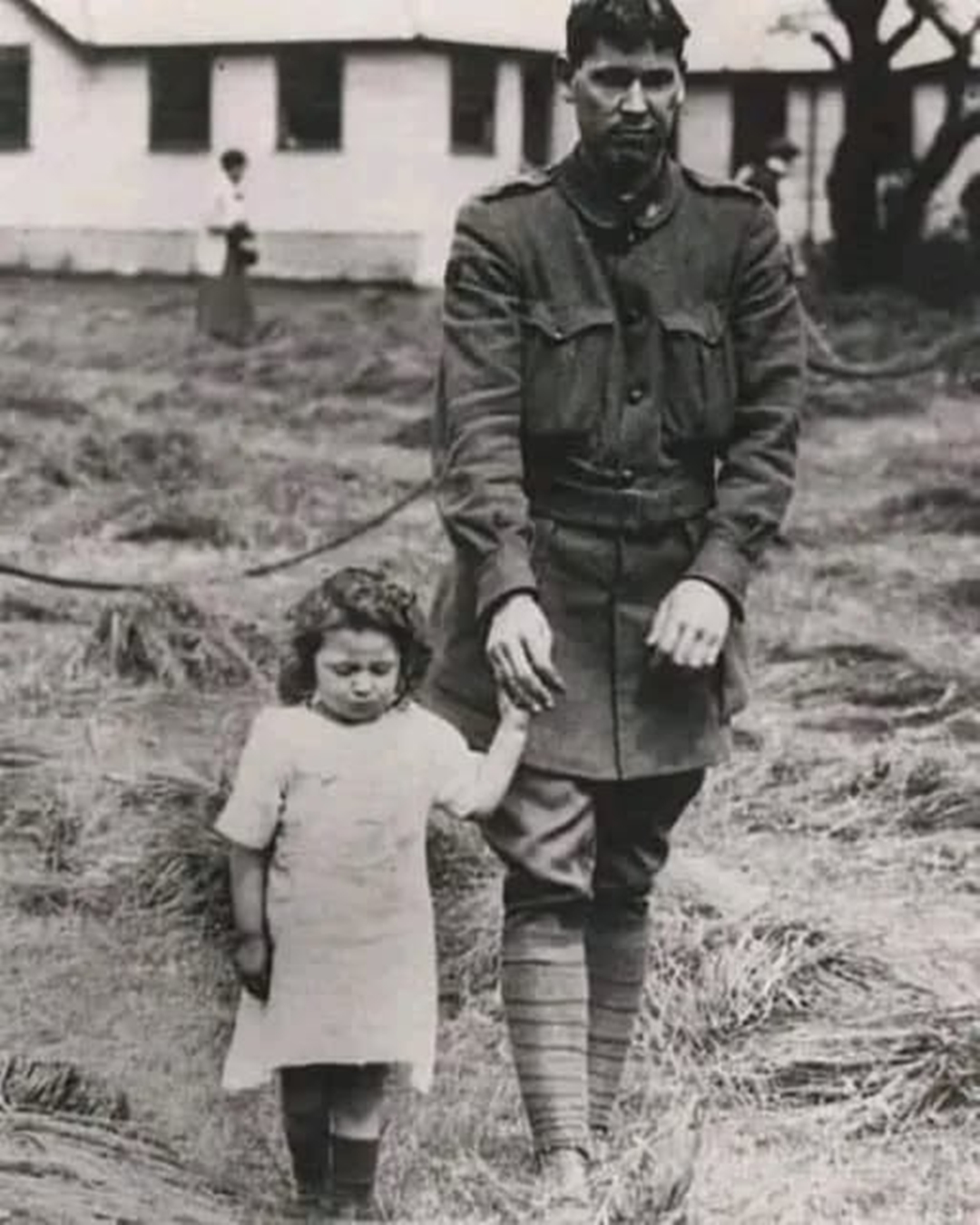There’s a faded photograph, softened by time, but the story it holds is timeless. It shows Little Ruby Crane, a small child whose simple acts of kindness became a beacon of light for soldiers plunged into darkness by the First World War. Her life, even at such a young age, became one of the most touching stories of compassion from that era.
A Garden of Healing
The setting was St. Dunstan’s in Brighton, England – a place established to help soldiers blinded in the brutal trench warfare of WWI. These men, many still young, were learning to navigate a world without sight, grappling with trauma and an uncertain future. Ruby’s father was the head gardener at St. Dunstan’s, and three-year-old Ruby spent her days exploring the grounds, surrounded by these veterans.
Most children might have been shy or confused. But Little Ruby, with innocent courage, understood one simple thing: these men couldn’t see. So, she did the most natural thing imaginable. She took their hands.
A Small Hand, A Huge Comfort
Without hesitation, she would approach a soldier, slip her tiny hand into his rough, calloused one – hands that had known rifles and trenches – and softly ask, “Where would you like to go?” She became their guide, leading them to workshops, classrooms, or just a sunny spot in the garden.
Her touch was more than just guidance; it was connection. It was warmth. It was a reminder of innocence and kindness in a world that had shown them unimaginable cruelty. “They were so pleased to have a child come and talk to them,” Ruby recalled decades later. “It was something different…” It broke the monotony of their difficult new reality. This gentle, instinctual kindness felt almost like the pure comfort found in the soft presence of therapy animals, offering solace without words.
Read More: The Hidden Meaning Behind Princess Diana’s Cannes Gown: A Heartfelt Farewell to Grace Kelly
A Symbol of Hope
Word of Little Ruby‘s simple service spread. Visitors were deeply moved by the sight of this tiny girl confidently leading blinded heroes. Her kindness became a symbol of hope. People began sending her gifts – dolls and toys – tokens of gratitude for the comfort she offered. Her image even appeared on the cover of St. Dunstan’s first annual report and was used in fundraising emblems.
A Lasting Legacy
Ruby Crane lived a long, full life, passing away in her late nineties in 2011. The war ended, the soldiers she helped moved on, but the memory of her simple, profound kindness endured. Her story isn’t just a historical footnote; it’s a powerful lesson. It shows that healing often starts with compassion, that the smallest gestures can have the biggest impact, and that even a child can offer profound comfort in times of despair.
Little Ruby reminds us that the most important stories are often the quietest ones – about empathy, connection, and the simple act of taking someone’s hand and showing them they are not alone in the dark.
Full Story: Man Loses 360 Pounds Naturally, Internet Rallies to Support His Next Step

